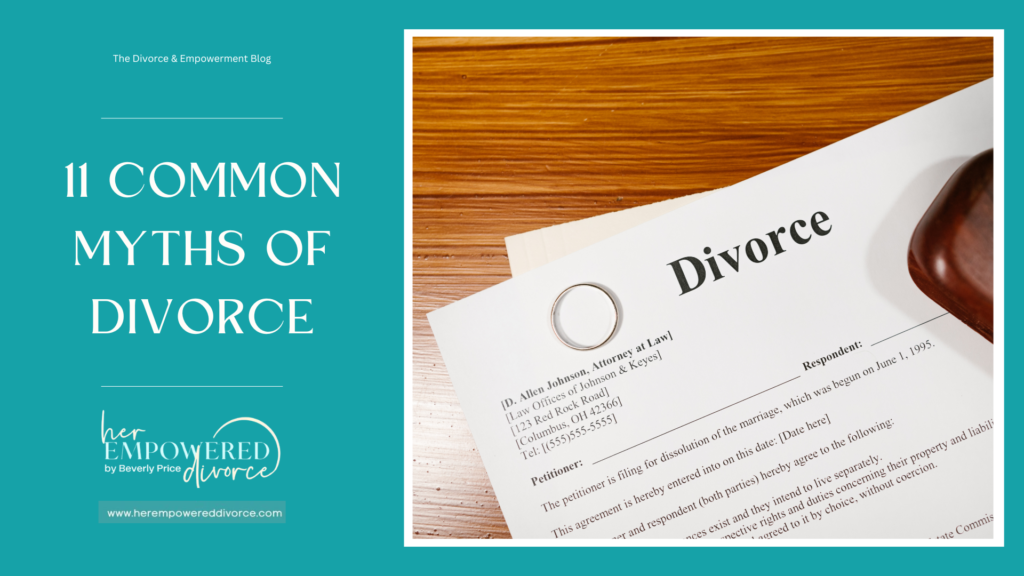Divorce can be a challenging and emotionally draining experience for anyone going through it. Navigating the legal and emotional complexities of ending a marriage can leave you feeling overwhelmed and confused. In this blog, we will walk you through the basic divorce process and explore the different types of divorce. Additionally, we’ll introduce the concept of divorce coaching as a valuable resource to guide you through this difficult journey.
The Basic Divorce Process
Divorce is the legal dissolution of a marriage, and the process typically involves several steps. While the specific details may vary depending on your jurisdiction and circumstances, here is a general overview of the basic divorce process:
- Filing a Petition: The divorce process usually begins with one spouse, referred to as the petitioner, filing a divorce petition or complaint with the court. This document outlines the reasons for seeking a divorce and may also include requests for issues like child custody, support, and property division.
- Service of Process: After filing the petition, the other spouse, known as the respondent, must be officially served with a copy of the divorce papers. This ensures that both parties are aware of the divorce proceedings.
- Response: The respondent has a specific period to respond to the divorce petition. They can either agree to the terms proposed in the petition or contest them, leading to a more complex and time-consuming legal process.
- Temporary Orders: In some cases, temporary orders may be issued to address immediate concerns such as child custody, spousal support, and property use during the divorce process.
- Discovery: This phase involves gathering information and evidence related to assets, debts, income, and other relevant factors that will help in negotiating the terms of the divorce settlement.
- Negotiation or Mediation: Many divorces are resolved through negotiation or mediation, where both parties work together (often with the assistance of attorneys) to reach an agreement on issues like child custody, property division, and support payments.
- Trial: If negotiation or mediation fails, the case may go to trial, where a judge will make decisions on unresolved issues based on the evidence presented.
- Final Decree: Once all issues are resolved, a final divorce decree is issued by the court. This document outlines the final terms of the divorce, including custody arrangements, property division, and any ongoing support obligations.
- Post-Divorce Matters: After the divorce is finalized, there may be ongoing matters such as child support payments, visitation schedules, and modifications to the divorce decree if circumstances change.
Types of Divorce
Divorce is not a one-size-fits-all process, and there are various types of divorce that can be pursued based on the specific circumstances of the couple. Here are some common types of divorce:
- Contested Divorce: In a contested divorce, the spouses are unable to agree on key issues, leading to a more adversarial legal process. This often results in a trial where a judge makes the final decisions.
- Uncontested Divorce: An uncontested divorce occurs when both spouses can reach an agreement on all issues, including property division, child custody, and support, without the need for a trial.
- No-Fault Divorce: Many jurisdictions now offer “no-fault” divorce, where neither party is required to prove that the other spouse did something wrong to cause the marriage to end. This simplifies the divorce process by eliminating the need to assign blame.
- Mediated Divorce: Mediation involves a neutral third party (the mediator) who helps the spouses reach a mutually acceptable agreement on divorce-related issues. It is a less adversarial and more cooperative approach.
- Collaborative Divorce: Collaborative divorce involves each spouse having their own attorney, but all parties commit to resolving issues outside of court. This process emphasizes open communication and cooperation.
- Default Divorce: If one spouse fails to respond to the divorce petition within a specified time frame, the court may grant a default divorce, essentially allowing the divorce to proceed without the absent party’s participation.
The Role of Divorce Coaching
Divorce coaching is a valuable resource for individuals navigating the divorce process. A divorce coach is a trained professional who provides guidance, support, and assistance throughout your divorce journey. Here’s how a divorce coach can help:
- Emotional Support: Divorce can be emotionally challenging, and a divorce coach can provide a safe space to express your feelings and cope with the stress and uncertainty.
- Navigating the Legal Process: Understanding the legal aspects of divorce can be overwhelming. A divorce coach can explain the steps, paperwork, and deadlines involved, ensuring you stay on track.
- Communication Skills: Effective communication is crucial during divorce negotiations. A divorce coach can help you develop communication strategies to navigate discussions with your ex-spouse and legal professionals.
- Goal Setting: A divorce coach can help you set clear goals for the divorce process, ensuring that your priorities and interests are addressed.
- Conflict Resolution: If disputes arise during the divorce, a divorce coach can assist in finding constructive solutions and avoiding unnecessary court battles.
Conclusion
Divorce is undoubtedly a challenging life event, but with the right guidance and resources, you can navigate it successfully. Understanding the basic divorce process and the various types of divorce can empower you to make informed decisions. Additionally, considering the support of a divorce coach can provide invaluable assistance in managing the emotional and legal aspects of your divorce journey. If you need assistance or guidance through the confusing process of divorce, you can turn to a qualified divorce coach for help. Remember, you don’t have to go through this difficult time alone.



